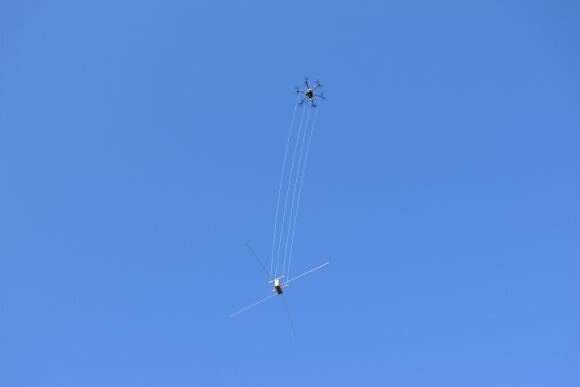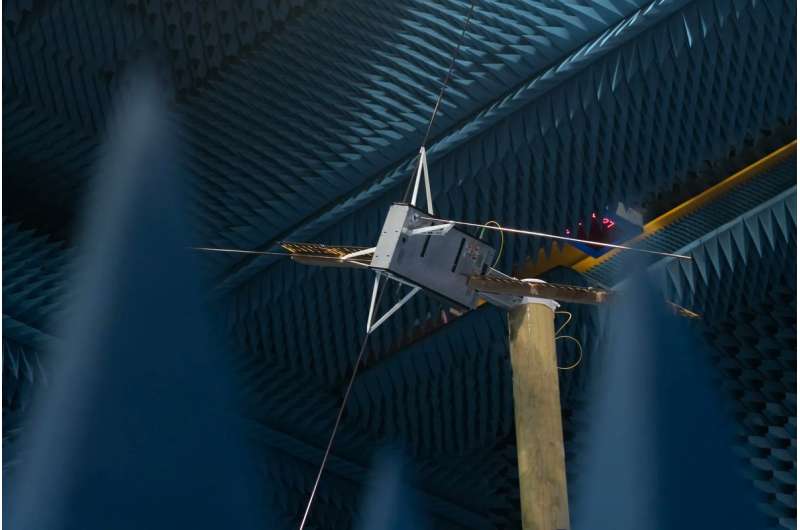Planned for launch with ESA's Hera satellite in 2024, it will arrive at the Didymos system in 2027, about five years after NASA's recently launched DART mission will purposefully collide with Dimophos in an attempt to change its orbit.
Just watching the fallout from that spectacular collision is only part of the mission, though. Pointing a ground-penetrating radar at Dimorphos will help scientists understand the effects of the impact on the asteroid's internal structure. Dimorphos is only 160 km in diameter. But it will also help flesh out what the asteroid's interior is made of in the first place.
The low-frequency radar has to work well to accomplish that mission, and it hasn't proved easy to test. Operating at 60 MHz, it would need to be tested at a range far below the standard operating frequency of the Hybrid European Radio Frequency and Antenna Test Zone, or "Hertz" chamber. The Hertz chamber, coated with the usual assortment of foam spikes, could test the power output and interference from devices operating at the 400 MHz range.

Such a high-frequency cut-off didn't work for the Juventas team. To get the data they needed, they needed to change the capabilities of the Hertz chamber itself—and luckily, they came across an opportunity to do so. ESA provided some funding for a general upgrade to the Hertz chamber for general testing purposes but then tailored some aspects specific to the testing environment needed by Juventas.
Buying better foam panels wasn't the only upgrade to the chamber. The upgrade installed a combination of hardware (fiberglass towers) and software (noise cancelation) improvements that engineers hope will help deal with some of the signal reflection and echoing that plagued low-frequency testing in the chamber in the past.
When all the upgrades were done, researchers put an actual model of the Juventas probe body into the refurbished chamber. They attached its solar panels and antennas in a specific attempt to understand how all the different wireless power, sensing, and communication systems would interact with one another. The mockup still passed with flying colors, right before a critical design review for the project next month.
The mission looks set to pass that design review and keep moving forward to development. The actual Juventas spacecraft body will return to the Hertz chamber in 2023 for final electromagnetic testing. If all goes well, the 6U sized CubeSat will hitch a ride with Hera and prove that all the testing that went into its design was worthwhile when it gives us our first up-close images of the interior of an asteroid.
Explore further



